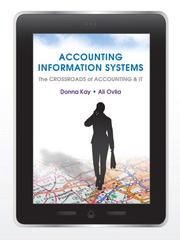Answered step by step
Verified Expert Solution
Question
1 Approved Answer
Show me the steps to solve QUESTION ONE [ 2 5 ] 1 . 1 There are ten ( 1 0 ) accounts listed on
Show me the steps to solve
QUESTION ONE
There are ten accounts listed on the following table. Complete the table by identifying and recording the element to which each account will be allocated and state whether the account will be shown in the statement of financial position SOFP the statement of changes in equity SOCE or the statement of profit or loss and other comprehensive income SOCI You may use the abbreviated form of the relevant statement as shown in the example below:
No
Account
element
Component of financial statement.
Example
Bank
Asset
SOFP
Equipment
Electricity
Services rendered
Investment in shares
Dividends received
Trade receivable
Long term borrowings
Interest on borrowings
Drawings
Capital
Required: Use the table above to formulate your solution. Consider each of the accounts listed on the table and allocate to an element and show in which of the components of the financial statements the account will be shown.
Provide the definition of a liability and briefly describe the three criteria for showing a liability in the financial statements.
Financial statements are prepared and presented under the assumption that the entity is going to continue into the foreseeable future. What is this assumption commonly known as and what is its significance?
Briefly describe the two fundamental qualitative characteristics as identified in the conceptual framework. Also list two qualities that enhance the two fundamental characteristics.
QUESTION TWO
Ringo Smart opened a business, Smart electrical appliance repairs, on November He decided that for his business the financial year ending will be February each year. Ringo presented the following balances at February ;
Balances at February
R
Equipment
Inventory spare parts
Bank
Trade payables
Long term borrowing
Capital R Smart
The following is a summary of the transactions that took place during the financial year ended ;
Number
Transactions for the year ended February
Equipment to the value of R was brought into the business by Ringo whose son was using the equipment but no longer needed the equipment because he got a job with an international company
During the year, services rendered totalled R of which R was for cash and the balance was on credit.
Ringo purchased R worth of spare parts during the financial year, of
which was bought on credit and was bought for cash.
On February stock was taken of spare parts which was valued at R
Wages of R was paid during the year.
Trade payables were paid R for the year.
Interest at per year on long term borrowings was paid on February The borrowings were not increased nor paid during the year.
Required:
Calculate the balance of the Capital account at March
Record the above transactions in a table that is formatted as follows:
No
Assets
Equity
Liabilities
Noncurrent
Current
Capital
Income expenses
Non
current
Current
Begin the table with the balances at March Clearly indicate increases and decreases with and or respectively.
QUESTION THREE
Benji Walker developed keep fit programmes which he also conducted to select groups of people. The following details appeared in the preadjustment trial balance of Keepfit Services as at December the end of the financial year.
List of accounts
Debit R
Credit R
Equipment at cost
Accumulated depreciation: Equipment
Vehicles at cost
Accumulated depreciation: Vehicles
Inventory: consumables
Trade receivables
Allowances for credit losses
Bank
Capital: B Walker
Drawings
Long term borrowings
Trade payables
Service fees
Rent income
Salaries and wages
Rent expense
Telephone
Interest on borrowings
Electricity and water
Consumable material
Additional information:
Physical stocktaking revealed that there was consumable material on hand at December valued at R
Repairs to the vehicle costing R was erroneously charged to the vehicle at cost account. A correction has not been recorded as yet.
Equipment and Vehicles have to be depreciated as follows:
a
Equipment must be depreciated at per year on the reducing balance method. No equipment was bought or sold during the current year.
b
Vehicles must be depreciated on the straight line method over a year period. The residual value of the vehicle
Step by Step Solution
There are 3 Steps involved in it
Step: 1

Get Instant Access to Expert-Tailored Solutions
See step-by-step solutions with expert insights and AI powered tools for academic success
Step: 2

Step: 3

Ace Your Homework with AI
Get the answers you need in no time with our AI-driven, step-by-step assistance
Get Started


